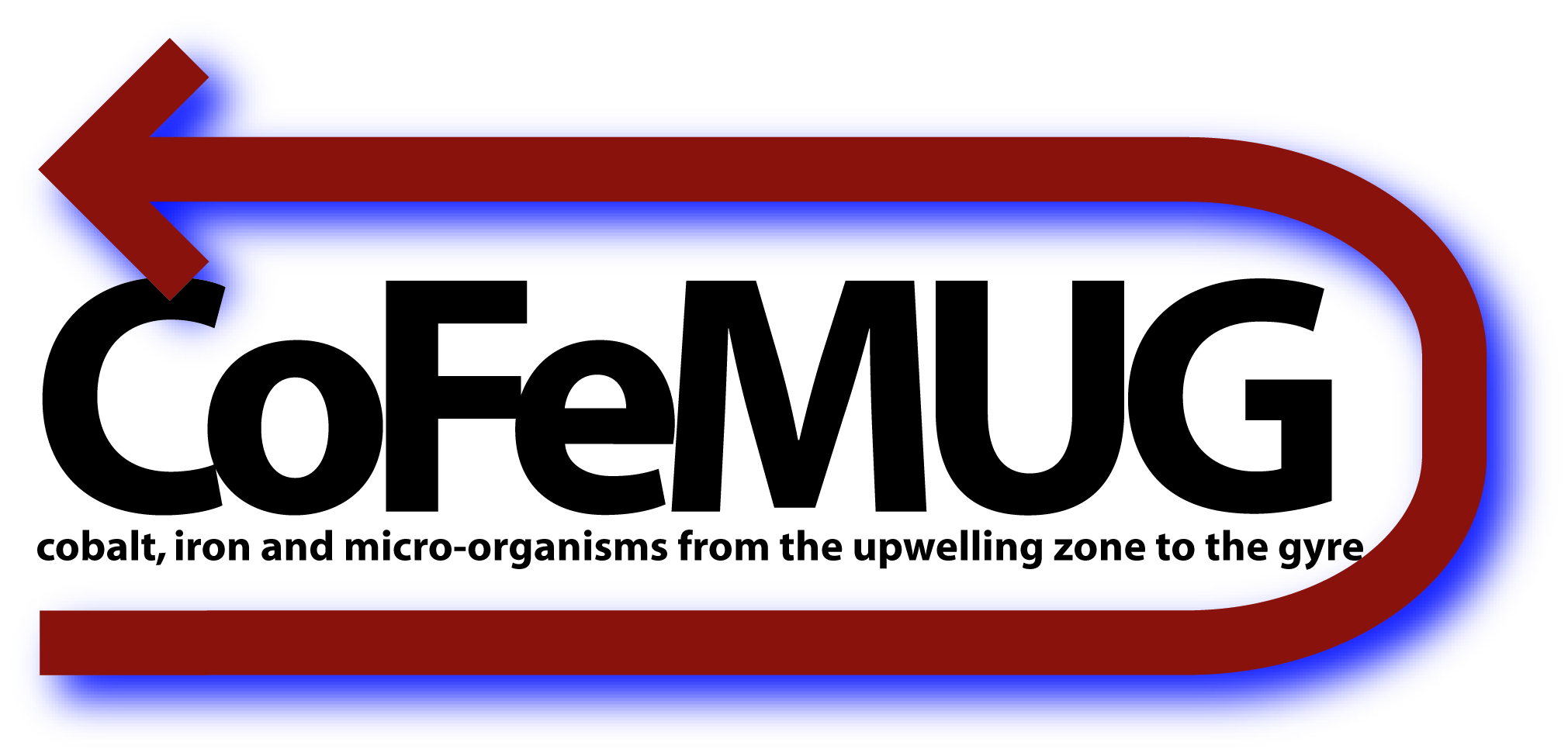 ©2020 Biological and Chemical Oceanography Data Management Office.
©2020 Biological and Chemical Oceanography Data Management Office.Funded by the U.S. National Science Foundation
The geochemistries of dissolved cobalt (Co) and iron (Fe) in the oceanic water column share several characteristics such as extremely low concentrations, redox chemistry, low solubility,and utilization as micronutrients by marine microbes. Iron has been the subject of considerable research focus in recent years due to its role in limiting phytoplankton productivity in oceanic and coastal upwelling environments. Cobalt has been much less studied, but recent data show it may be important in influencing primary productivity or phytoplankton community composition in certain geographical areas.
The CoFeMUG project predated GEOTRACES, so while it is not formally recognized as a GEOTRACES section, it is considered a GEOTRACES-related project and the CoFeMUG data are GEOTRACES compliant.
State-of-the-art geochemical and molecular biological techniques were used to address biogeochemical questions in the South Atlantic, and focus especially on the two trace metals, cobalt and iron. The 27-day cruise in November and December 2007 to the South Atlantic was designed to study cobalt and iron biogeochemistry and focus on four major hypotheses.
(1) Large fluxes of labile cobalt are associated with upwelling systems even in Aeolian dominated environments.
(2) Cobalt and phosphate show correlations in (and only in) surface waters due to micronutrient utilization and rapid remineralization. The slope of the correlation is dependent on the chemical speciation of cobalt.
(3) The absence of Trichodesmium populations in the subtropical and tropical South Atlantic is caused by iron limitation.
(4) Based on work from the California and Peru Upwelling regimes, primary productivity in the Benguela upwelling regime off of South West Africa may be iron limited or iron-cobalt colimited.
A combination of geochemical and biological/molecular analyses were made across an oligotrophic-upwelling transition to examine how changing metal regimes affect the physiology and growth of the important primary producers Trichodesmium and Synechococcus.
CoFeMUG project results are published in:
Noble, Abigail E., Carl H. Lamborg, Dan C. Ohnemus, Phoebe J. Lam, Tyler J. Goepfert, Chris I. Measures, Caitlin H. Frame, Karen L. Casciotti, Giacomo R. DiTullio, Joe Jennings, and Mak A. Saito (2012) Basin-scale inputs of cobalt, iron, and manganese from the Benguela-Angola front to the South Atlantic Ocean. Limnology & Oceanography. Vol. 57(4), July 2012. pgs 989-1010. doi:10.4319/lo.2012.57.4.0989 (www.aslo.org/lo/toc/vol_57/issue_4/0989.pdf)

Lead Principal Investigator: Mak A. Saito
Woods Hole Oceanographic Institution (WHOI)
Contact: Mak A. Saito
Woods Hole Oceanographic Institution (WHOI)
Ocean Carbon and Biogeochemistry [OCB]
U.S. GEOTRACES [U.S. GEOTRACES]